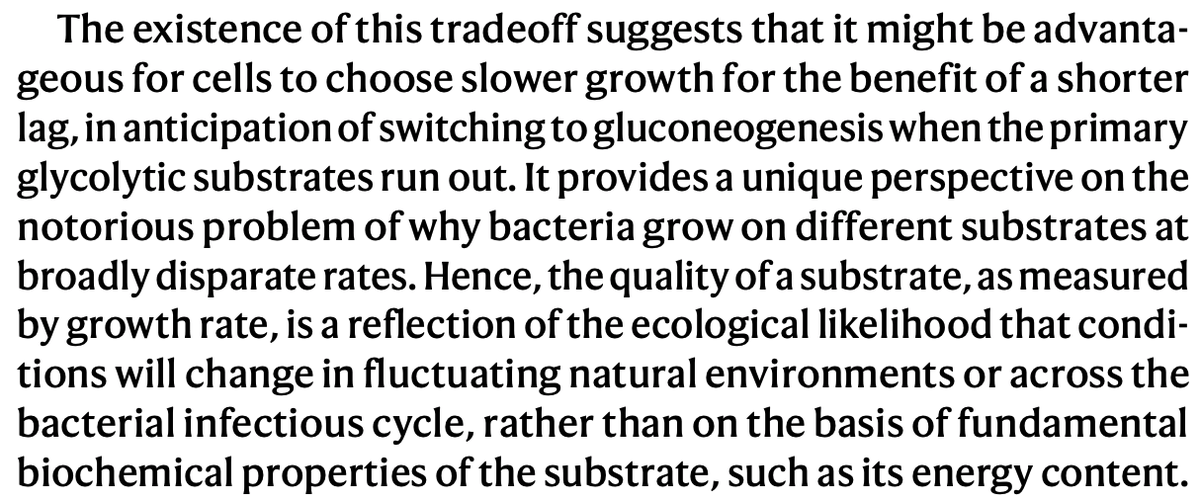https://www.nature.com/articles/s41586-020-2505-4 I loved this paper and I bet it's conclusions will be taught in "Intro to Microbial Physiology" classes for decades to come. Very fun to read about a fundamental increase in our understanding of microbial metabolism only a month after it's published (1/4)
I have no affiliation to this work, I'm just a fan. The basic question at the heart of the paper is "Why does E. coli display non-optimal growth rates on glycolytic metabolites?". For example- a SNP in a glycerol transporter can increase E. coli's glycerol growth rate. (2/4)
Why don't all E. coli have this SNP? Previous hypothesis was that E. coli as a species is maladapted to glycerol. This paper shows (convincingly and in multiple ways) that it's because the faster you grow on a substrate, the longer the lag time to switch to a new substrate (3/4)

 Read on Twitter
Read on Twitter


